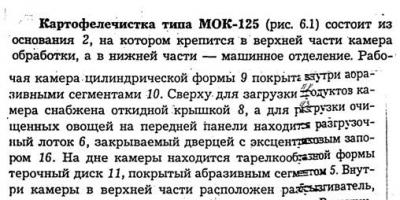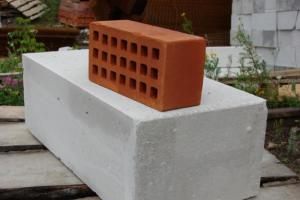We'll tell you about several ways to make a thermos yourself from scrap materials.
This article is intended for persons over 18 years of age
Have you already turned 18?
A thermos is a special device that is used to keep food hot for a long time, and cold food cold. It can also be used to prepare various infusions or porridges. This item is necessary, useful and practical.
There are situations when a thermos is needed, but it is simply not at hand, and the one that is, due to dilapidation or damage, cannot be used for the necessary purposes. To somehow solve this problem, we suggest making a thermos at home from scrap materials. This will require a little time and a certain amount of the most common materials that are found in every home.
A homemade thermos can be quite successfully used for its intended purpose - to preserve food or as an educational project for your child’s physics lesson. Ever since school years, everyone knows that a thermos is designed on the principle of a Dewar flask. That is, a vessel of smaller diameter must be placed in a vessel of larger diameter, and conditions must be created between their walls to reduce thermal conductivity (vacuum). Naturally, it will not be possible to create a vacuum at home, but it is quite possible to reduce thermal conductivity.
To make a thermos in at home, we will need the following materials and accessories:
- a bottle with enough volume to hold the required portion of liquid;
- old newspapers or paper towel;
- Scotch tape or electrical tape (preferably black, as this will increase the heat-saving effect);
- aluminium foil;
- scissors.
When choosing a bottle, you should consider some parameters that are important for a homemade thermos:
- its volume must be sufficient for a certain amount of liquid;
- the bottle can be either plastic or glass, but keep in mind that glass has better thermal insulation properties, but it is very difficult to find a glass bottle that has a reusable screw cap, and this is very important. In addition, the plastic does not break.
The bottle should be evenly wrapped in several layers of old newspapers or paper towels (there should be at least three layers). To secure the paper more securely, you can use tape or tape. Next we wrap everything with aluminum foil. We also use tape for secure fixation. Excess paper and foil can be cut off with scissors. Make sure that enough material is cut around the neck so that you can drink the liquid without obstruction. Also note that the paper should in no way peek out from under the foil. If the foil breaks during the wrapping process, it can be glued with tape. In order for the foil to stay securely on the bottle and for such a homemade thermos to retain heat even better, it is recommended to wrap the bottle with black electrical tape. To do this, attach the edge of the electrical tape to the top of the bottle and wrap the bottle in a downward spiral, covering the entire surface of the thermos. This coating will make the thermos more reliable and can be used repeatedly.
One of the criteria for choosing a thermos is the duration of preservation of the desired temperature. Therefore, to check how long a thermos made at home will maintain temperature, you should check this. To do this, pour hot water into the thermos and immediately measure its temperature, and then check it every 30 minutes. If you are not satisfied with the heat retention efficiency, you can add more insulating layers or make a thermos using another method.
Over time, the stopper on the thermos wears out. In this case, it is quite possible to make a stopper for a thermos with your own hands. To do this, we need a piece of dense foam, cling film, and scissors. You need to cut a cork of the required size from the foam, wrap it in cling film so that it does not crumble. To prevent such a plug from being pushed out by hot air from the thermos, you can make a puncture in the middle with a syringe needle.

If you like long walks or bike rides, winter fishing or mushroom picking, then you will need a thermos for food, which is quite possible to make with your own hands. It is not difficult to build a container that retains heat well.
To do this you will need:
- plastic jar with lid;
- a piece of polyurethane foil insulation;
- tape or tape;
- scissors or sharp knife.
The insulation should be cut according to the dimensions of the existing can - the lid, bottom, and height of the can. It is important to make a reserve for the lid that matches its height - this will help keep the heat in such a thermos longer. Carefully cut out all parts with scissors. Attach the circles with tape to the bottom and lid of the jar. Close the sides in the same way. It is better to put food in such a thermos wrapped in foil. Or you can put small bottles of baby food and feel free to go for a walk. You can also sew a special bag from thick fabric with handles (for example, from old jeans) or tie it with thread. Thus, the thermos for food will have a more convenient and attractive appearance.

Do-it-yourself thermos for live bait
With the onset of cold weather, many winter fishing enthusiasts are faced with the problem of keeping live bait alive. For the purpose of normal transportation and long-term stay of live bait in the cold, special containers called canas are used. Using the “thermos effect” you can build a canal for live bait with your own hands without any special expenses.
For this we need such materials and tools:
- scissors or stationery knife;
- double-sided tape, electrical tape, glue;
- two containers of the same shape, but different in size (for example, ordinary plastic buckets, which you can buy at a hardware store, or which you might have left after repair work). Condition: containers must have tight lids, and the smaller bucket must be 5-10 cm below and less than the greater;
- foam rubber, polystyrene foam, rolled material of the “isover” type, etc.
The smaller container is located in the larger one, and between them there is a heat insulator, which will slow down the process of freezing the water inside the can. You can assemble such a thermos for live bait with your own hands in 10-15 minutes. The main thing is to take the measurements correctly and cut out the corresponding parts according to them - for insulating the bottom, walls and lid. These parts can be glued to a larger container with glue or double-sided tape. So the insulated bucket is installed in a larger bucket. If there are voids between the buckets, it is better to fill them with pieces of insulating materials. We also insulate the canal cover. If desired, a hand-made thermos for live bait can be placed in a tarpaulin case and a strap from an old belt or an old bag can be attached to it.
For a trip on vacation, to a picnic, to the dacha, to the sea, such a thing as a thermos bag has already become a mandatory accessory. Of course, such pleasure is not cheap, but don’t be discouraged. With a little patience and ingenuity, you can create a thermos bag with your own hands.
To create such a homemade masterpiece we will need:
- small cardboard box;
- glue;
- scissors;
- ruler, pencil;
- stapler;
- double-sided and packing tape;
- a piece of thick fabric;
- foil polyethylene foam (preferably with double-sided foil, at least 5 mm thick; it can be purchased at any hardware store).
So, we select or put together a box from plywood of the required size. We take careful measurements and make a pattern on a sheet of foiled polyethylene foam. We cut out the parts for the bottom and walls so that they fit snugly against the walls of the box. The joints can be fastened with a stapler, and then go around the inner corners with packing tape, and around the outer corners with double-sided tape (so that the finished product is securely attached). If desired, the box can be covered with polyethylene foam on the outside - this will only increase the retention of heat or cold in the thermal bag. In the same way we finish the box lid, which can be screwed to the box with hinges, or you can simply attach a convenient handle for opening. You can optionally sew a durable case with handles from thick fabric. This will make it more convenient to use the thermos bag.

Naturally, such a thermos bag will not be able to cool food on its own, but it will be able to keep them fresh and chilled for a certain time.
What to do if the thermos does not hold heat well?
Naturally, a thermos that you make with your own hands will be inferior to its factory-made counterpart. But you must admit that in special situations such a product will turn out to be a lifesaver. Moreover, you can safely experiment with other heat-insulating materials, which will improve the properties of the thermos significantly. For example, instead of paper, take polystyrene foam, cotton wool, foam rubber, increase the number of layers of polyethylene foam, etc.
Every fisherman in cold weather while fishing dreams of hot tea or coffee to warm up a little, but it often happens that there is no hot water at hand due to the lack of a thermos. In a thermos you can keep not only hot liquid to keep you warm in the cold, but also cold liquid to enjoy cold water in the summer heat. In this article we will talk about how to make a thermos at home, using only available materials.
Necessary materials
To make a thermos, the following materials are needed:
- foil;
- plastic lemonade bottles;
- scotch;
- thermal insulation material.
 The design of a homemade thermos is simple and it works on a simple principle: the first bottle is the body of the thermos itself, and inside this bottle there is another bottle, slightly smaller in size - it acts as a flask where the liquid is located. There should be thermal insulation between these bottles. Insulation or pumped air can be used as thermal insulation.
The design of a homemade thermos is simple and it works on a simple principle: the first bottle is the body of the thermos itself, and inside this bottle there is another bottle, slightly smaller in size - it acts as a flask where the liquid is located. There should be thermal insulation between these bottles. Insulation or pumped air can be used as thermal insulation.
Before you start making a thermos, you need to decide on the size of the bottle and the amount of liquid it holds so that you have enough water for the entire fishing trip. For a future homemade thermos, it is better to take ordinary lemonade bottles - they are durable and reliable.
For a small thermos for one person, bottles for a 0.5 liter flask are suitable - it will be on the inside, and for the outside you need to use a 1 liter bottle. If you want to make a thermos a little larger, then you need to take bottles of a slightly larger volume - 1 liter for the flask, and 2 liters for the body. When making a thermos for group fishing, bottles of even larger volume are needed: 2.5 liters for the flask and a 5 liter bottle for the body.
A thermos is an indispensable item in a number of situations. For example, in those when you need to keep the liquid not only hot, but also cold. Few people think about it, but even porridge can be transported in a thermos. For those who lead a healthy lifestyle and watch their diet, taking various decoctions of natural herbs, it becomes indispensable. Only a small number of people know that you can make a thermos with your own hands at home. Read more about this in this article.

What it is
The question may seem strange, because each of us has seen a thermos. However, in order to begin the process of making a thermos, you need to know how it works. The thermos is based on Dewar principle. A smaller container is inserted into a larger container, and then a vacuum is formed between them. As is known, heat is transferred by molecules when they collide in space or environment. If there are no molecules, then there is no heat transfer.
Obviously, the absence of molecules is a vacuum. This is what causes low thermal conductivity. Heat is also transferred using infrared radiation. The inner surface of the thermos reflects heat precisely because it “does not receive” infrared rays.
Of course, there is no need to talk about the formation of a vacuum in a homemade thermos, but it is quite possible to create conditions under which the thermal conductivity of the vessel will be low.


Necessary materials
In this article we will look at two ways to make a thermos at home. Everyone can easily find the materials that will be needed to make a thermos in the first way at home.
- Bottle. The easiest way to make a thermos is from a glass bottle. You can, of course, use a plastic container, but it is not recommended. The main criterion in choosing a bottle remains its volume. It should be noted that it is quite difficult to find a glass bottle with a tight-fitting lid, which is very important for a future thermos.
- Some paper towels or unnecessary newspapers.
- To reduce thermal conductivity – black electrical tape(you can replace it with tape).
- Regular food baking foil.
- Regular scissors.
For the second - more complex - method you will need the following materials.
- Two plastic bottles with volumes of 0.5 and 1 liter.
- Regular food foil.
- Polyurethane foam.
- Scotch.


Separately worth noting a number of well-known insulation materials that can be used in the process of making a thermos: foam chips, toilet paper, sawdust and even wool in any form. Most of these materials do not tolerate contact with water well. Therefore, when using them to make a thermos, it is necessary to carefully pour the liquid into the vessel.
You cannot pour liquid into a plastic bottle whose temperature is more than 80 degrees Celsius. At high temperatures, plastic not only begins to melt, but also releases harmful substances into the liquid.


How to do it?
Below we will give step-by-step instructions on how to make a thermos for tea and more at home.
Method 1
- You need to take one sheet of newspaper and wrap it completely around the bottle. You can also wrap the bottom. It is necessary to make three such layers, you can do more if you want to make the thermos a more efficient device. Sheets of newspaper can be replaced with paper towels.
- Secure it all with a layer of tape or black electrical tape.
- The bottle is wrapped in a layer of foil.
- Secure this layer again with tape/duct tape.
- Wrap the vessel again with a layer of electrical tape. It is best to start doing this in a spiral, securing the tape almost at the very neck, and then go down to the bottom.
- A homemade thermos can be considered ready. The only thing left to do is to check its effectiveness. To do this, pour boiling water into the container and close it with a lid.

After half an hour, you need to check the temperature of the liquid, focusing on your feelings or measuring it with a thermometer. If the liquid remains hot, then the thermos can be used.
Method 2
- First you need to take a small bottle and wrap it in foil. The shiny side of the foil should be on the inside of the bottle. It is necessary to apply 5 to 10 layers of foil. The bottom of the bottle should also be wrapped in foil. The same goes for the lid.
- Take a large bottle and cut off the top part.
- A small bottle is inserted into a large one.
- Now both containers need to be secured to each other with tape. It is especially worth paying attention to places where polyurethane foam may later spill out.
- A small hole is made at the bottom of a large bottle. This must be done carefully, without damaging the small bottle.
- “Pour” polyurethane foam into the free space between the bottles. The work requires special care - make sure that the foam does not spill out.
- Remove excess foam with a rag and leave the thermos to dry.
- A homemade thermos can be considered ready.


In the second method, instead of a small plastic bottle, you can use glass containers - either a bottle or a jar. It will hold heat better than the first one.
Important! You cannot use too much polyurethane foam if the bottle is small and made of glass, since polyurethane foam has the ability to expand when hardening. As a result, the inner glass bulb may simply burst.


Stopper for thermos
As mentioned above, you only need to take a bottle that has a tight-fitting lid. However, if it is lost or because of it the liquid cools quickly, then it is quite possible to make a thermal insulating plug yourself.
The easiest way is to make it from foam plastic. To do this, use a foam penknife to cut out an analogue of the cork that fits the size of the neck hole. After this, the cork is wrapped in foil. You need to make a hole in the middle of the cork using a needle. Such a cork will be pushed out of the bottle by hot air when pressed (for plastic containers).
Having decided to correct my bite, I encountered an unexpected problem after installing braces. After all, dentists warn that in such cases it is necessary to thoroughly brush your teeth after every meal.
If you are at home, then, of course, this condition is not at all difficult to fulfill. But lately I've been traveling quite a lot, and brushing my teeth on the road is a bit difficult.
Perhaps the only food that does not require brushing your teeth is drinking yogurt. After it, you just need to rinse your mouth. You can easily take a couple of bottles of this drink with you on the road. But in the summer heat in a backpack it will deteriorate in a few hours.
Of course, I have a thermos and more than one, for example, a rather compact, modern one made of stainless steel. But, firstly, having a volume of 1 liter, it itself weighs 700-800 grams, and on the road there is no need for extra weight.
And, secondly, the tall thermos did not fit into the photo backpack, and it was not very convenient to drink from the wider one. And pouring a drink from a bottle into a thermos is extra hassle.
And then I decided to make a camping thermos myself. To do this, I needed scraps of 10 mm thick polyurethane foam and polystyrene foam (photo 1), as well as three rolls of various adhesive tape: container, mirror aluminized and reinforced with reinforcement (photo 2).
You can cut polyurethane foam (PPU) either with scissors (photo 3) or with a breadboard knife (photo 4). First, I cut the side wall of the thermos body so that it would fit three bottles of yogurt (photos 5 and 6).
Then I covered the inside of the workpiece with mirror tape (photos 7 and 8).
Then I secured the outside with PVC tape (photo 9) and wrapped it with reinforced tape for strength (photos 10 and 11).
I cut out the bottom from polyurethane foam (photo 12), covered the inside of it with mirror tape (photo 13) and glued it into the body using reinforced tape (photo 14).
Then I cut out the lid of the thermos from foam plastic so that it would be inserted inside the body with some effort, and also covered it with mirror tape on the inside and reinforced tape on the outside (photo 15). In order to prevent the penetration of heat through the junction of the lid and the walls of the thermos (after all, the walls of the thermos are not rigid and therefore do not fit too tightly to the lid), I cut out adhesive tape from tape to secure the lid (photo 16).
So, all that remains is to place the bottles in a homemade thermos and close the lid.
In this “thermos”, ice is stored in a room at 20°C for twelve hours! After all, polyurethane foam conducts heat very poorly, and the mirror tape inside creates additional reflection of infrared rays.
Such a thermos is not only reliable and conveniently placed in a photo backpack, but also very light - it weighs only 95 grams (photo 17).
Of course, the dimensions of such a thermos can be completely different. I made a mini version for myself, but others may need a larger thermos. Chilled beer (or something stronger) will be very popular at a picnic, and you can make a large container for transporting shish kebab.
Homemade thermos with your own hands - photo:
 1 PC. handmade felt homemade fabric flowers craft feltro…
1 PC. handmade felt homemade fabric flowers craft feltro…
14.08 rub.
Free shipping★★ ★★ ★★ ★★ ★★ (4.80) | Orders (268)
 10 pieces. pine needle artificial plant artificial flower branch for…
10 pieces. pine needle artificial plant artificial flower branch for…
The thermos is an indispensable attribute for travelers and fishermen, athletes and housewives. It is often used in everyday life. Sometimes the situation arises that there is no thermos at hand and there is not the slightest opportunity to purchase one. And you still want to drink a hot (note, not intoxicating) tea or coffee while camping! There is a way out - you can make a thermos with your own hands from improvised materials.
I think that even a child knows the circuit diagram of the device. The thermos is designed on the principle of a Dewar flask. That is, a smaller vessel is placed in a vessel of larger diameter and conditions are created between them to reduce thermal conductivity (vacuum). Of course, we cannot create a vacuum in our man-made thermos, but we can reduce thermal conductivity. Let's make a thermos from improvised materials. Namely from ordinary plastic bottles.
Making a thermos with your own hands
For this we need:

How to make a plastic thermos

The thermos is ready!
Features of using a plastic thermos
If the inner plastic flask is replaced with a glass bottle, then even boiling water can be poured into it and then the temperature of the liquid will remain high longer.
Advantages of a homemade thermos
- It is quick and very easy to make
- The cost of a thermos practically approaches zero
- A plastic thermos cannot be broken
As you understand, such a thermos, made with your own hands, will be inferior to its factory counterpart both in design and in the time it takes to maintain the temperature of the liquid poured into it. But in emergency situations, it can be a great help and help keep the tea hot for several hours. And if it is possible to use and experiment with other heat-insulating materials, then the properties of the thermos can be improved significantly. For example, instead of paper, use polystyrene foam, cotton wool, foam rubber and whatever suits your wild imagination.








